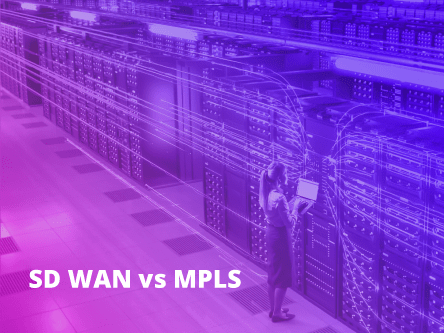Wide Area Network (WAN) architecture like multi-protocol label switching (MPLS) has been the standard way of connecting distributed branch offices and data centres. MPLS provides low latency connectivity for mission-critical applications and services by routing traffic based on predetermined “labels”. However, with its rigid structure and traditional approach to networking, legacy WAN offers limited visibility and control over network traffic, and is difficult to adapt or scale.
The MPLS model connects remote sites to a central data centre or company headquarters. This type of legacy network makes sense when remote sites heavily rely on accessing data and applications from one central data centre.
However, given the rise in mobile users, cloud services and applications, MPLS is often unable to keep up in today’s complex digital ecosystem and dissolving network perimeter. This can result in performance issues, as well as inefficiencies in terms of costs and complex, time-consuming network management.
There has been a clear decline in MPLS usage. According to TeleGeography, MPLS was at a dominant high of 82% in 2018, which has since fallen to the current percentage of 46% in 2022. Furthermore, research by TechNative found that while only 18% of businesses were reported to be installing SD WAN in 2018, it has since doubled since then
Legacy WAN Challenges
Legacy WAN architecture comes with many challenges which can hinder an organisation’s performance and growth:
- High Costs – Traditional WAN like MPLS can be more expensive to manage compared to SD WAN. SD WAN offers a cost-effective operational model as all the traffic to SaaS application can be offloaded at the branch level, reducing the bandwidth required at the HQ data centre. It also enable remote access at a branch or country level rather than a single central remote access server of firewall
- Poor Cloud and SaaS Performance – When enterprises move to the cloud, legacy MPLS becomes inefficient as traffic is backhauled through the data centre, which acts as a central choke point. This results in lower performance and high latency, especially if the centralised hub is far from the destination.
- Restricted Visibility and Agility – Legacy WAN provides little to no visibility, control or agility to enterprises using the service. It requires an additional customer-facing monitoring tool for the enterprise to have visibility of application performance. It is often unable to respond to network changes in real time due to deployments taking months to complete, which makes it a rigid network to work with when trying to pivot and scale with evolving business strategies and technologies such as secure multi-national remote access.
Seamless, Secure and Scalable SD WAN
With all the challenges that enterprises face with legacy WAN, it is critical for network engineers to update their WAN and introduce a forward-thinking network architecture like SD WAN.
SD WAN refers to software-defined wide-area network architecture that can be layered on top of other types of networks and managed entirely through software.
SD WAN delivers many important benefits like security, scalability and performance. With less costs and complexities, SD WAN can separate the control and management processes from underlying networking hardware, making them available as software to be easily configured and deployed.
Some key benefits of SD WAN include:
- Enhanced Network Security – Secure and reliable network connectivity with encrypted tunnels, as well as the ability to layer additional firewalls and cloud security options. SD WAN is a component of the Secure Access Service Edge (SASE) architecture – a term coined by Gartner. SD WAN complements the security component of SASE, Security Service Edge (SSE), to provide an architecture that addresses both the remote user/end point and WAN requirements securely.
- Reduced Costs – SD WAN automates traffic steering based on application policies and Business Intent Overlays which are simple to implement on a central orchestrator. With MPLS, these rules would require time consuming and very large configurations on CPE. Supplementing an MPLS underlay with internet may provide savings but more importantly, enables local internet breakout to trusted internet sites and SaaS providers.
- Built-in Visibility and Control – Centralised management enables IT teams co-manage an SD WAN Service Provider to monitor, troubleshoot and optimise application performance across the entire enterprise. This helps to increase productivity, without waiting for a service provider change request process.
Staying Competitive with New Network Architecture
To stay competitive and maximise performance in this complex, cloud-driven market, enterprises need to be able to stay in control of their network.
SD WAN can help enterprises to move at the speed of today’s digital ecosystem, without legacy networking models holding them back. It has the agility, scalability, and security to boost business application performance and extend connectivity to new markets, while providing cost-efficiencies for added business success.
Get in touch today to learn how Epsilon SD WAN can help you to securely scale your WAN with new speed and agility.







